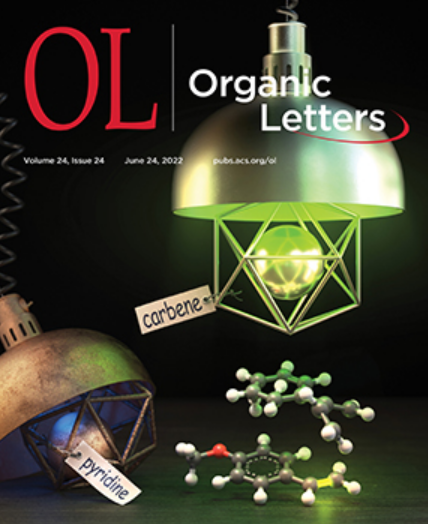Kyung Hee University (Korea) Development of New Sustainable Iron-based Metal Photocatalysis Technology for Carbon Cyclohexenes Synthesis

The research outcome of a Kyung Hee research team, supported by the Global Center for Pharmaceutical Ingredient Materials (GPIM) and the Basic Research Center of the National Research Foundation of Korea, was selected as the cover page of Organic Letters
Professor Eun Joo Kang at the Global Center for Pharmaceutical Ingredient Materials (GPIM) and her research team has published the research result under the title, “[4+2] Cycloaddition Reaction Study of Iron Photocatalysis Using Green Light (Green-Light-Driven Fe(Ⅲ)(btz)3) Photocatalysis in the Radical Cationic [4+2] Cycloaddition Reaction),” which was featured on the cover page of Organic Letters (IF=6.07), an internationally renowned academic journal in the field of organic chemistry.
Focusing on sustainable photo-reduction catalyst that led to the development of iron photocatalysis technology using green light
As the general research on photochemical reaction has become increasingly more popular, the demand for sustainable photo-reduction catalysts to replace costly ruthenium (Ru) and iridium (Ir) is also attracting wider attention. A photo-oxidation-reduction catalyst is a substance that creates a redox reaction when receiving light energy. If a next-generation photocatalyst can enable skeletal synthesis of various bioactive molecules, it will significantly expand the practical application of photocatalyst. As the conventional photocatalysts such as ruthenium and iridium are extremely rare in nature, the search is on for cheaper and more readily available photocatalysts utilizing more abundant types of metal. In response to this demand, Professor Eun Joo Kang’s research team has developed iron photocatalysis technology using green light, which is a mild visible light base, along with an organic reaction methodology for the synthesis of carbon cyclohexenes utilizing the new photocatalysis technology.
Several attempts have recently been made to develop a next-generation photocatalyst from ferrous metal, the most abundant heat transfer element on Earth. In the case of iron(II)-polypyridine complex, which has a similar structure to ruthenium, it has an iron-centered metal with a more contracted electron orbital than ruthenium and a weak ligand field. In addition, the photoactivated iron(II)-polypyridine complex has several possible non-radioactive relaxation pathways, limiting its potential as a photocatalyst. As the material is unstable and has a short half-life, energy can be transferred through other pathways than the ones desired.
Professor Kang’s research team has developed a photocatalysis system with high oxidizing power using a carbene complex that exhibits a strong ligand field. The team also succeeded in forming a radical cation intermediate from an alkene substrate under mild visible light conditions. The higher the oxidizing power, more diverse compounds can be oxidized, which increases the range of its practical application. The synthesis methodology developed by Professor Kang’s research team is not only applicable to the synthesis of various carbon cyclohexenes, but also can be applied to the final-stage cyclization of structurally complex biorelevant cyclohexenes, natural products showing physiological properties, so it is expected to be widely used in diversifying the functional groups of new drug candidates. It has high utility potential because the new methodology does not require additional oxidizing agents, reducing agents, or high temperature.
Securing the basic technology for new iron photocatalyst and helping to strengthen international competitiveness through localization of new drug candidates
Professor Hakwon Kim, the director of the GPIM, said, “Through this research, we have secured a new source technology for iron photocatalyst. In addition, development using this technology has enabled us to improve the efficiency of deriving new drug candidates including heterocyclic compounds. Localization of new drug materials will certainly strengthen our international competitiveness.”
The GPIM was founded in August 2017 when Kyung Hee was selected as the Gyeonggi Regional Research Center (GRRC). By deriving new drug candidates from natural substances, developing novel methodology for synthesis of new drugs, and securing evaluation technology, the Center supports local pharmaceutical material-related companies, development of the domestic pharmaceutical industry, and vitalization of the local economy.
